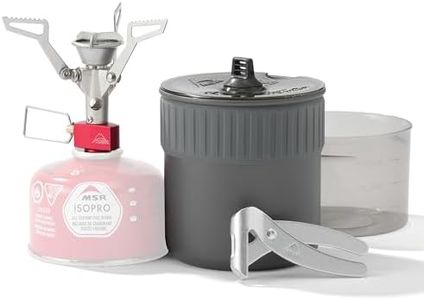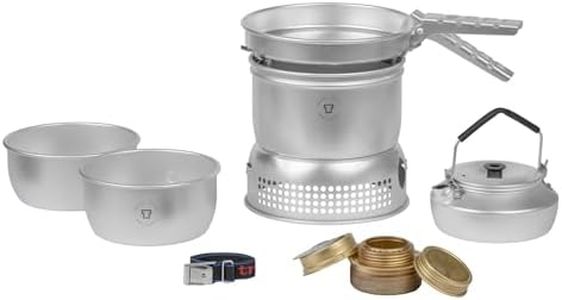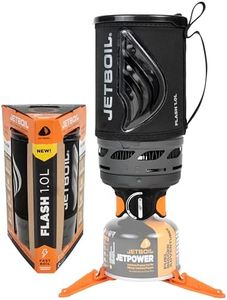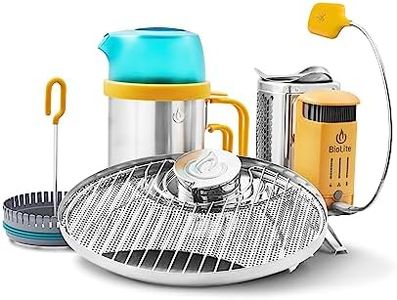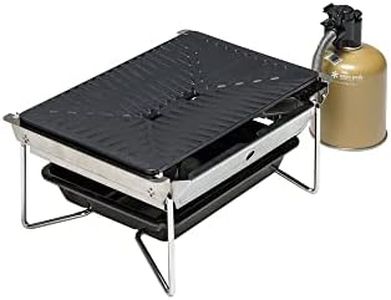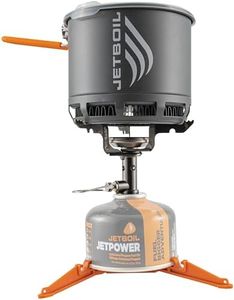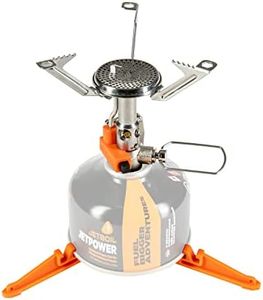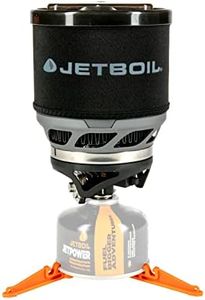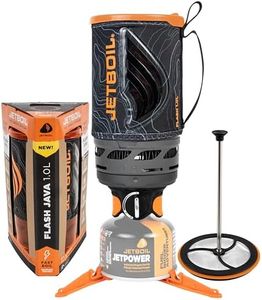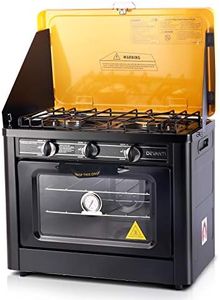We Use CookiesWe use cookies to enhance the security, performance,
functionality and for analytical and promotional activities. By continuing to browse this site you
are agreeing to our privacy policy
10 Best Camping Stove
From leading brands and best sellers available on the web.Buying Guide for the Best Camping Stove
Choosing the right camping stove is all about matching your outdoor cooking needs with the features that matter most for your adventures. Think about where you’ll use it (backcountry or established campsites), what kind of meals you want to prepare, and how easy you want things to be. By understanding the different features, you can select a stove that's safe, efficient, and enjoyable to use whether you’re camping solo or with a group.Fuel TypeFuel type refers to what powers the stove, such as propane, butane, white gas, or alternative fuels like wood or alcohol. The choice of fuel affects convenience, efficiency, and performance in different environments. For instance, canister fuels like propane and butane are easy to use and widely available, making them great for beginners and casual campers. White gas is more suited for cold weather and high altitudes, often favored by serious backpackers. Alternative fuels are sustainable but may require more effort to manage. Choose your fuel based on where you'll use your stove, how easy it is to find fuel, and whether you'll be facing cold or high-altitude conditions.
Stove TypeStove type describes the format and design, such as compact backpacking stoves, two-burner camp stoves, or integrated canister systems. Compact stoves are lightweight and ideal for hiking trips where space and weight matter. Two-burner stoves are heavier and suited for car camping, offering more cooking flexibility and capacity. Integrated systems combine the burner and pot for fast, efficient boiling, and are great for simple meals and boiling water. Your choice should depend on whether you prioritize portability, group cooking, or speed and ease of use.
Burner Power (BTU Output)BTU (British Thermal Units) output measures how much heat the stove can produce. A higher BTU generally means faster cooking times and better performance with big meals, but it can also use more fuel. Low BTUs (around 5,000-8,000) suit solo or minimalist cooking, while higher BTUs (10,000-20,000+) are better for feeding families or groups and boiling large pots of water. Consider the types of meals you want to prepare, and how quickly you'd like to cook, to determine the ideal burner power for your needs.
Ignition SystemThe ignition system is how you light the stove—either with a built-in push-button igniter (often called piezo ignition), or manually with matches or a lighter. Built-in ignition is very convenient but may be less reliable over time. Manual ignition is simple and generally more durable but requires you to carry a lighter or matches. If convenience is important or you’re new to camping, a built-in igniter may be helpful, but always consider carrying a backup just in case.
Weight and SizeWeight and size refer to how much space and heft the stove will add to your gear. Ultralight, compact models are essential for backpackers where every ounce matters, while larger, sturdier stoves are fine for car camping where portability is less of a concern. Think about how far you’ll have to carry the stove and how much cooking capacity you need, so you can find a balance between portability and how much you want to cook at once.
Wind ProtectionWind protection is about how well the stove shields its flame from the wind, which can affect cooking times and fuel efficiency. Some stoves feature built-in windshields or wind-blocking designs, while others may need a separate windscreen. Strong wind protection is especially important if you camp in exposed, breezy areas or high elevations. If you often deal with wind, prioritize models with effective wind-blocking features or plan to bring a separate windscreen.
Stability and Cooking SurfaceThis refers to how easily the stove can support your pots and pans, and how secure it sits on various surfaces. A large, stable cooking surface is important if you plan on preparing multiple dishes or using larger cookware, while small, narrower stoves can be less secure but are lighter and better for solo trips. Think about the meals you like to cook and the size of your cookware, and choose a stove that offers enough support and stability.
